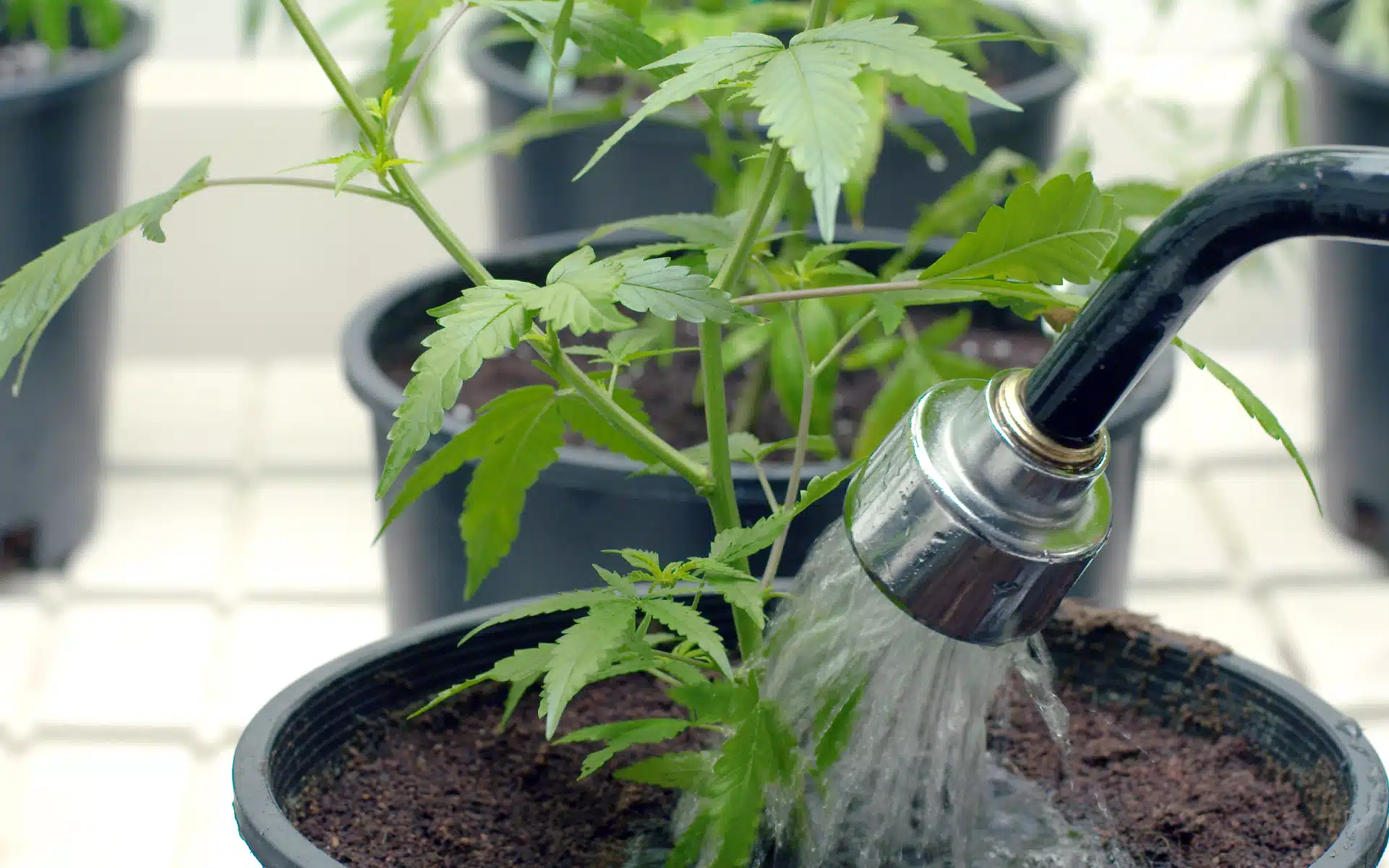Effects Of Overwatering Weed Plants

Effects Of Overwatering Weed Plants
As a cannabis grower, it’s important to understand the impact of overwatering on your plants. While water is essential for plant growth, too much of it can lead to a host of problems that can negatively affect your yield. In this article, we’ll explore the effects of overwatering cannabis plants and provide tips on how to avoid this common mistake.
The Importance of Proper Watering
Before we dive into the effects of overwatering, let’s first discuss the importance of proper watering. Cannabis plants require water to survive, but they also need oxygen to thrive. When you overwater your plants, you’re essentially drowning them by depriving them of oxygen. This can lead to a host of problems, including root rot, mold, and stunted growth.
Signs of Overwatering
One of the most obvious signs of overwatering is yellowing leaves. When you overwater your plants, the roots become waterlogged and can’t absorb nutrients properly. This leads to a nutrient deficiency, which manifests as yellowing leaves. Other signs of overwatering include wilting, drooping, and slow growth.
How to Avoid Overwatering
The best way to avoid overwatering your cannabis plants is to establish a proper watering schedule. This will depend on a variety of factors, including the size of your plants, the type of soil you’re using, and the humidity levels in your grow room. As a general rule of thumb, you should water your plants when the top inch of soil feels dry to the touch.
The Impact of Overwatering on Yield
Overwatering can have a significant impact on your yield. When your plants are waterlogged, they can’t absorb nutrients properly, which can lead to stunted growth and smaller buds. Additionally, overwatering can lead to mold and other fungal infections, which can ruin your entire crop.
How to Fix Overwatered Plants
If you’ve already overwatered your plants, don’t panic. There are a few things you can do to help them recover. First, make sure you’re not watering them too frequently. Allow the soil to dry out before watering again. You can also try adding a layer of perlite to the top of the soil to improve drainage. Finally, make sure your grow room has proper ventilation to prevent mold and other fungal infections.
How to Water Cannabis Plants
When it comes to watering cannabis plants, there are a few things to keep in mind. First, make sure you’re using the right type of water. Tap water can contain chlorine and other chemicals that can harm your plants, so it’s best to use filtered or distilled water. Second, make sure you’re using the right type of soil. Cannabis plants require well-draining soil that allows for proper oxygenation of the roots. Finally, make sure you’re watering your plants at the right time of day. Watering in the morning or early afternoon is best, as this allows the plants to absorb the water before the heat of the day sets in.
How Much to Water Cannabis Plants
The amount of water your cannabis plants need will depend on a variety of factors, including the size of your plants, the type of soil you’re using, and the humidity levels in your grow room. As a general rule of thumb, you should water your plants when the top inch of soil feels dry to the touch. When you water your plants, make sure you’re giving them enough water to saturate the soil, but not so much that it becomes waterlogged.
Watering Techniques
There are a few different techniques you can use to water your cannabis plants. The most common method is to simply pour water onto the soil around the base of the plant. However, this can lead to uneven watering and can cause the soil to become compacted. Another method is to use a drip irrigation system, which delivers water directly to the roots of the plant. This can help ensure even watering and can prevent the soil from becoming compacted.
The Three Main Nutrients
There are three main nutrients that cannabis plants require: nitrogen, phosphorus, and potassium. These nutrients are often referred to as NPK, and they play a critical role in plant growth and development. Nitrogen is essential for leaf growth, phosphorus is essential for root growth and flower development, and potassium is essential for overall plant health and disease resistance.
Secondary Nutrients and Micronutrients
In addition to the three main nutrients, cannabis plants also require secondary nutrients and micronutrients. Secondary nutrients include calcium, magnesium, and sulfur, while micronutrients include iron, manganese, zinc, and copper. While these nutrients are required in smaller quantities than NPK, they are still essential for plant growth and development.
Organic vs. Synthetic Nutrients
When it comes to providing nutrients to your cannabis plants, you have two main options: organic and synthetic. Organic nutrients are derived from natural sources, such as compost, bone meal, and fish emulsion. Synthetic nutrients, on the other hand, are chemically derived and often come in a concentrated form. While both types of nutrients can be effective, many growers prefer organic nutrients because they are more sustainable and can improve soil health over time.
Conclusion
In conclusion, overwatering can have a significant impact on your cannabis plants. By establishing a proper watering schedule and monitoring your plants for signs of overwatering, you can avoid this common mistake and ensure a healthy, bountiful harvest. And if you’re looking for high-quality cannabis products, be sure to check out Ganja West Online Dispensary. They offer a wide selection of concentrates, edibles, buds, and more, all available for delivery right to your door. If you are interested in buying weed online and THC products, check out Ganja West online weed dispensary and shop for your weed online and cannabis products at ganjawest.co!












